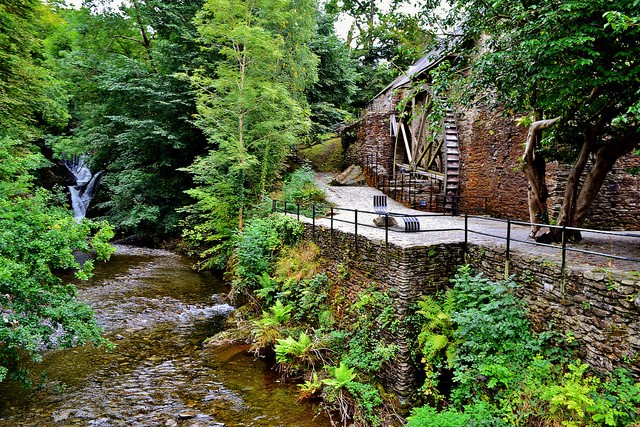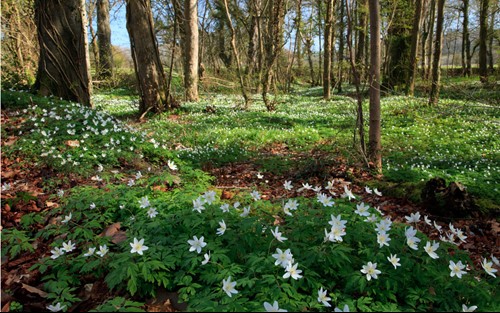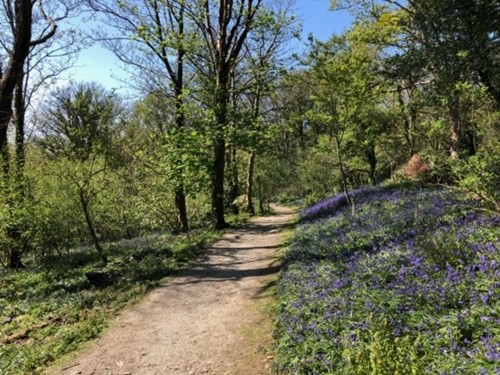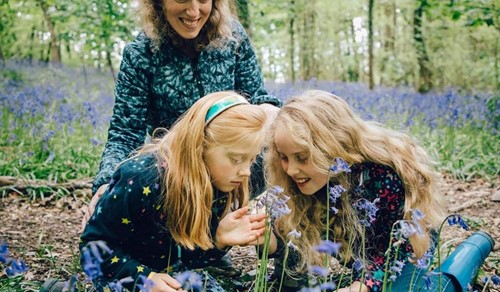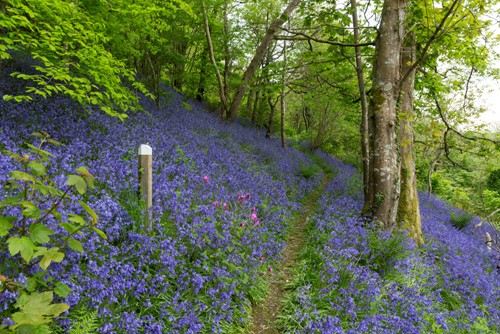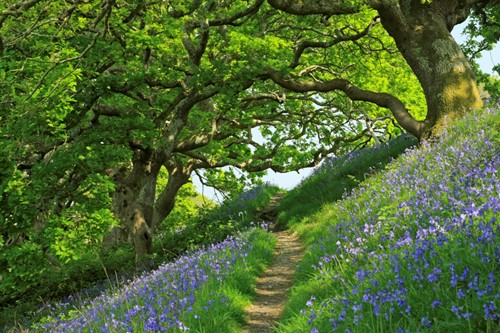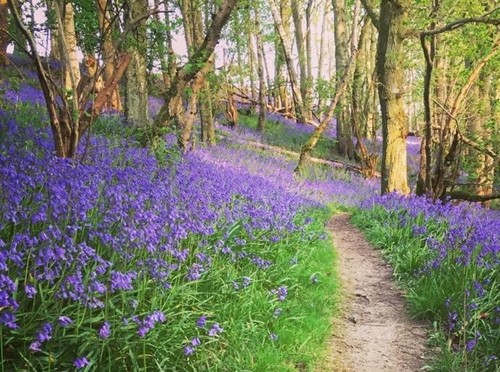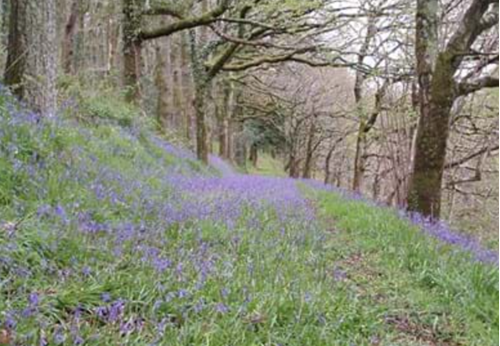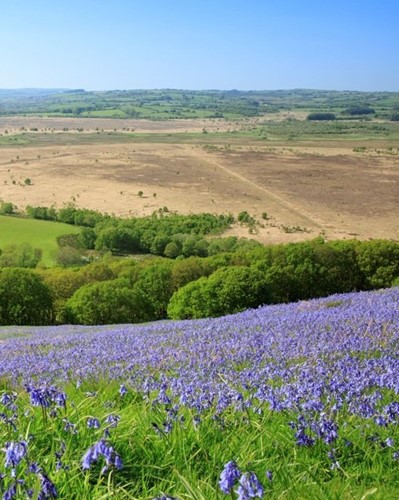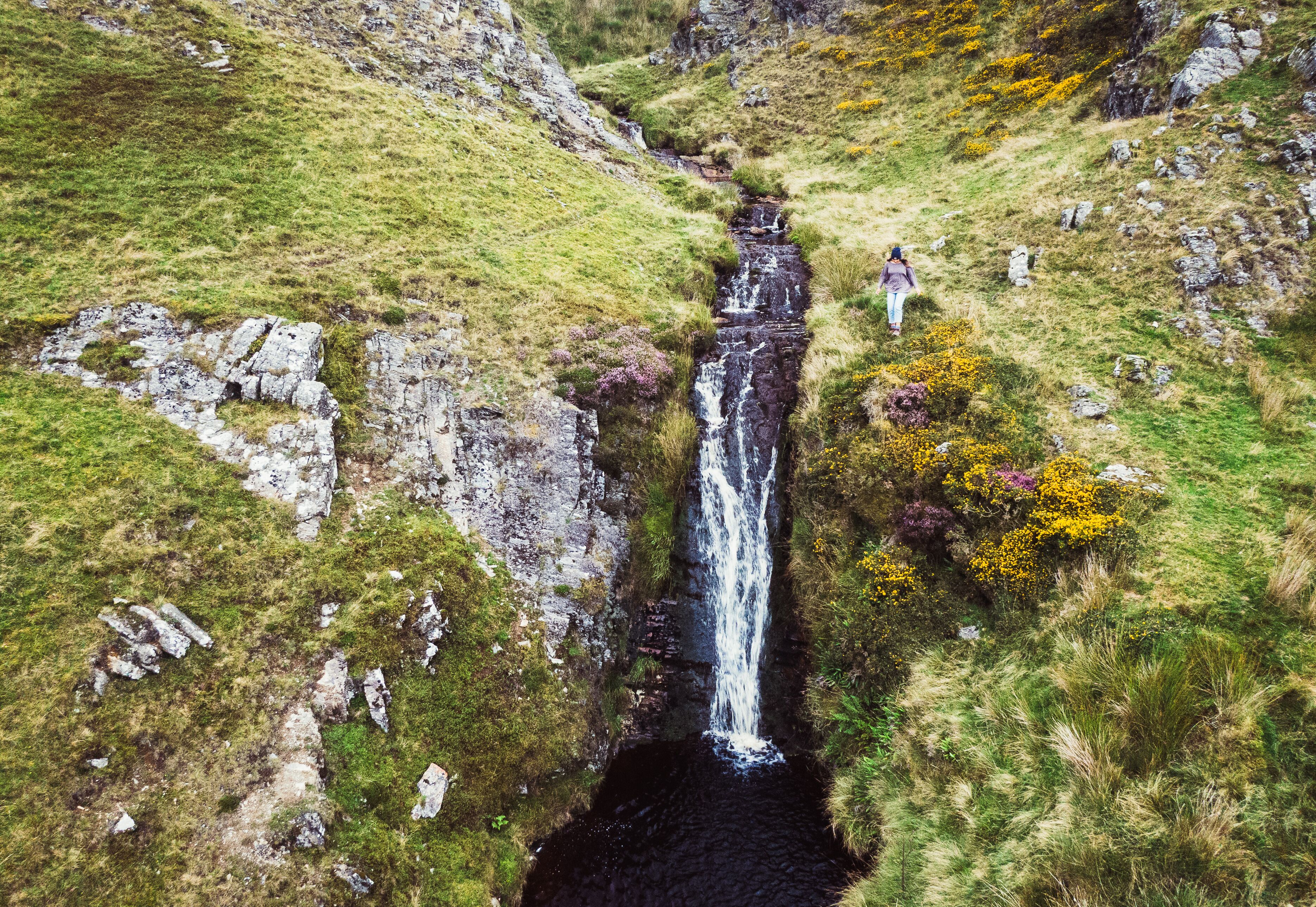
On the high plateau for the Cambrian Mountains, near the remote Teifi Pools, one of Ceredigion's secret waterfalls cascades into a tranquil pool, where, legend has it, a giant used to wash his hands.
Devil's Bridge Falls and the woodlands of the Rheidol
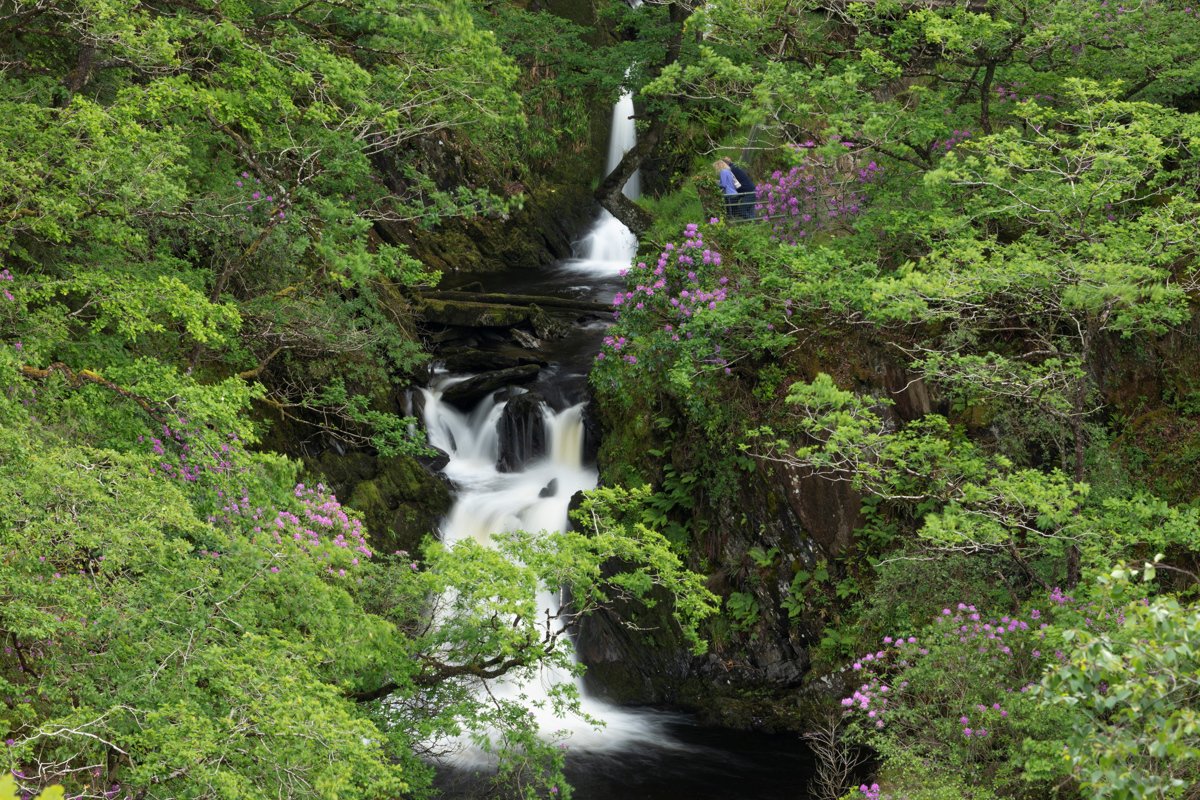
The legend of the bridges over the falls at Devil's Bridge and the dramatic setting have drawn visitors to admire the falls at Devil's Bridge for many centuries. William Wordsworth, like many other visitors, in awe of the famous waterfalls at Devil's Bridge, asked:
How art thou named? In search of what strange land,
From what huge height, descending?
The features of the dramatic wooded gorge and series of cascades have been given evocative names by visitors trying to describe their experience of this sublime environment including Devil's Punchbowl, Robbers Cave and Jacob's Ladder.
Glimpse some of the falls on the Ystwyth river through the trees as you approach Devil's Bridge by steam train with the Vale of Rheidol Railway - a dramatic trip along the steep slopes of the Rheidol valley to Devil's Bridge.
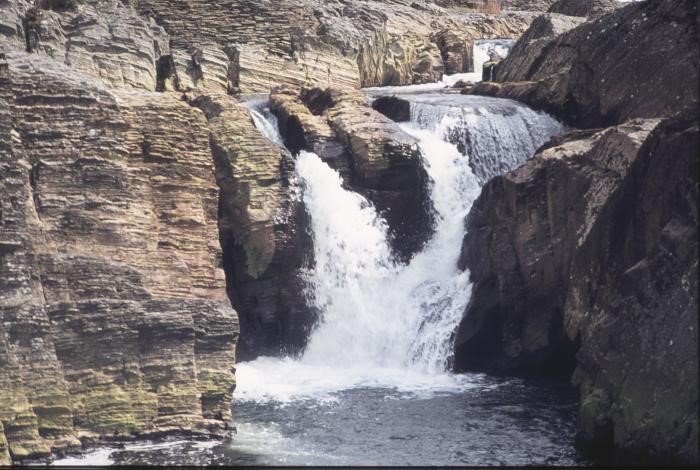
You can stop at one or more of the railway stations and halts on the Vale of Rheidol Railway and enjoy woodland walks, rejoining the railway to complete your journey. Stop at Aberffrwd to see the wier below the Rheidol reservoir or ask the railway guard for a request stop at Rheidol Falls so that you can visit the falls further up the valley.
Hafod and the woodlands of the Ystwyth
Not far from Devil's Bridge is Hafod - a woodland estate developed on 'Picturesque' design principles by Thomas Johnes. Earth and water were literally moved to create some of the seemingly wild and natural vistas, and walks designed to delight and thrill 18th century visitors have been restored for us to enjoy today.
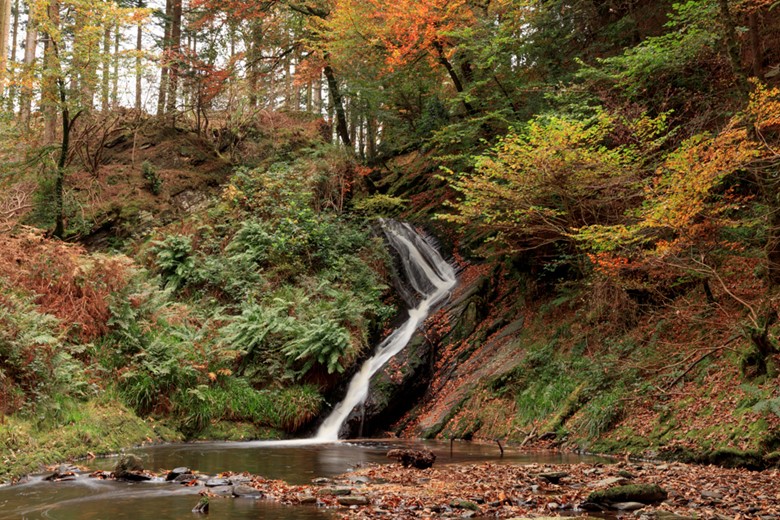
The gateway to the Hafod Estate was near the col known as Pen-bwlch-bod-coll - ‘the head of the pass of lost existence’. Here, Thomas Johnes had a stone arch built in 1810 to mark the Golden Jubilee of King George III .
From the car park and picnic site at The Arch, there are three circular walking trails through beech trees planted over 200 years ago by Thomas Johnes of Hafod. The Panorama walk, as it's name suggests, opens out onto wide vistas towards the mountains beyond.
Ceredigion's more recent plantations provide good, sheltered walks, with vistas opening up to reward you before you turn for home, such as at Coed Maenarthur (Arthur's stone woods) on the other side of the Miners Bridge at Pontrhydygroes, near the Hafod estate.
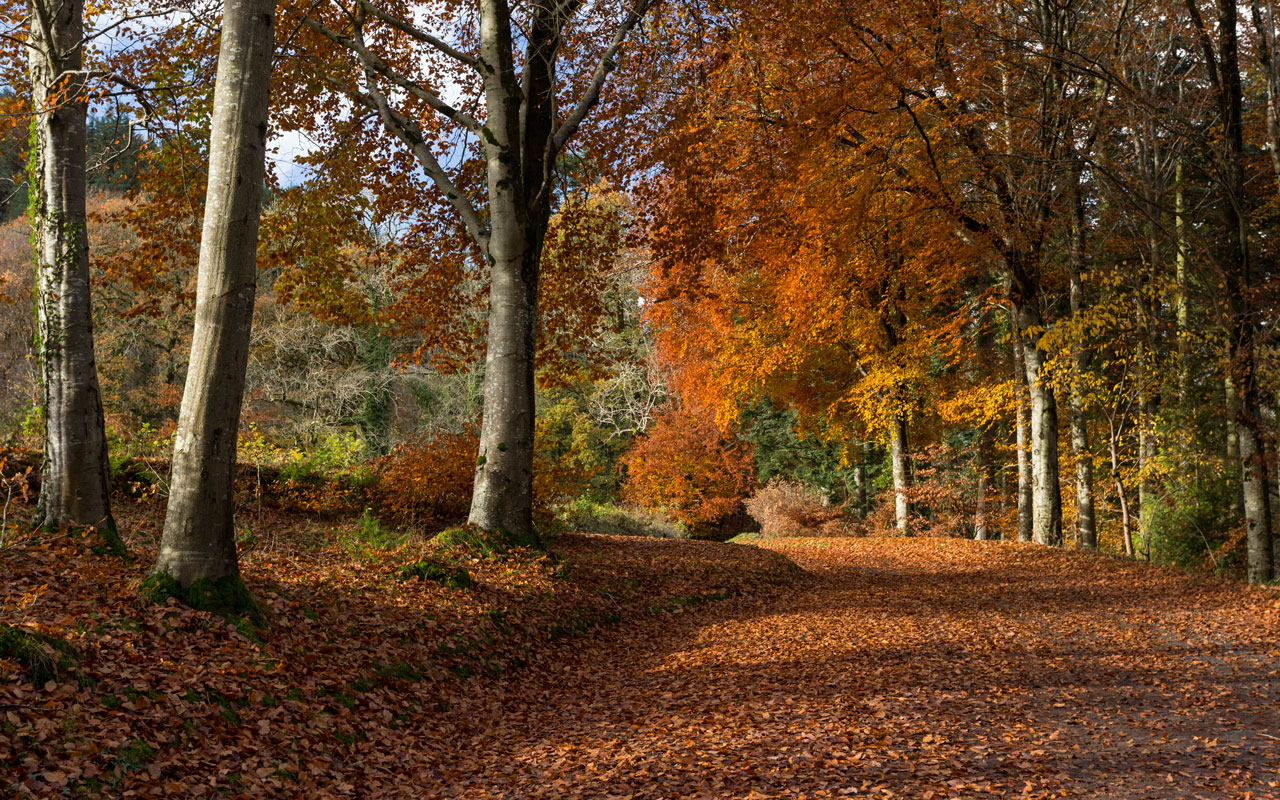
The waterfalls of the Teifi
At Cenarth, where the bridge has large, circular holes between its arches to allow floodwater to pass through them, there's a watermill on the edge of the falls, which for many years made use of the power of the water. Today is makes for a picturesque setting and a pretty picnic spot, and a place to look out for salmon leaping over the falls.
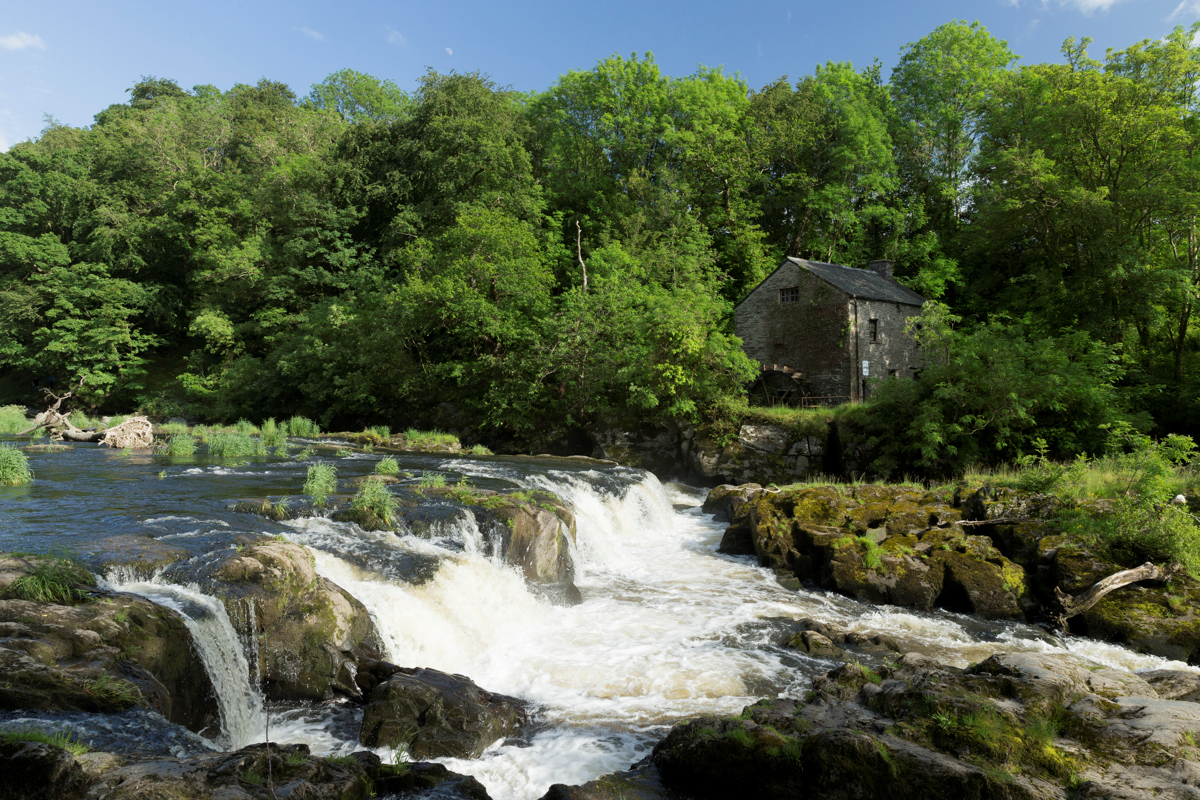
Upstream from Cenarth are Henllan Falls, where the Teifi tumbles through a wooded gorge before slowing to meander though meadows. A circular route loops under the Teifi Valley Railway towards the gorge of the Afon Cynllo, and returns to the river through Henllan village.
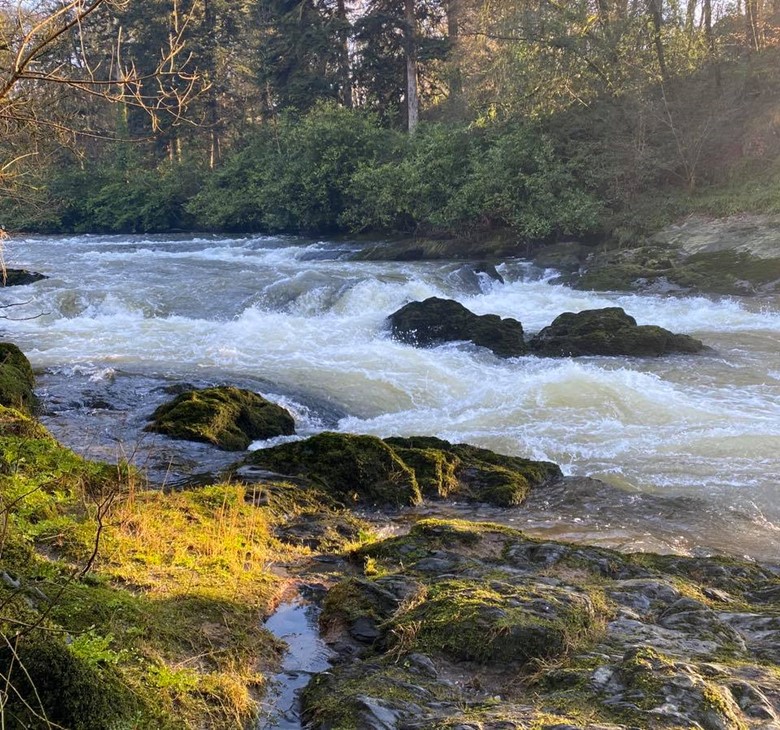
Wetland reserves
You don’t have to get your feet wet when you visit Ceredigion's very special wetland reserves – there are boardwalks that will take you out to the heart of our raised bogs where you can enjoy the unique atmosphere of this amazing landscape. The three raised bogs of the Cors Caron National Nature Reserve, at just over 2,000 acres, fill the valley of the upper Teifi river between Tregaron and Pontrhydfendigaid. One of the finest examples of raised peat bogs in lowland Britain, Cors Caron is recognised internationally as an important wetland reserve.
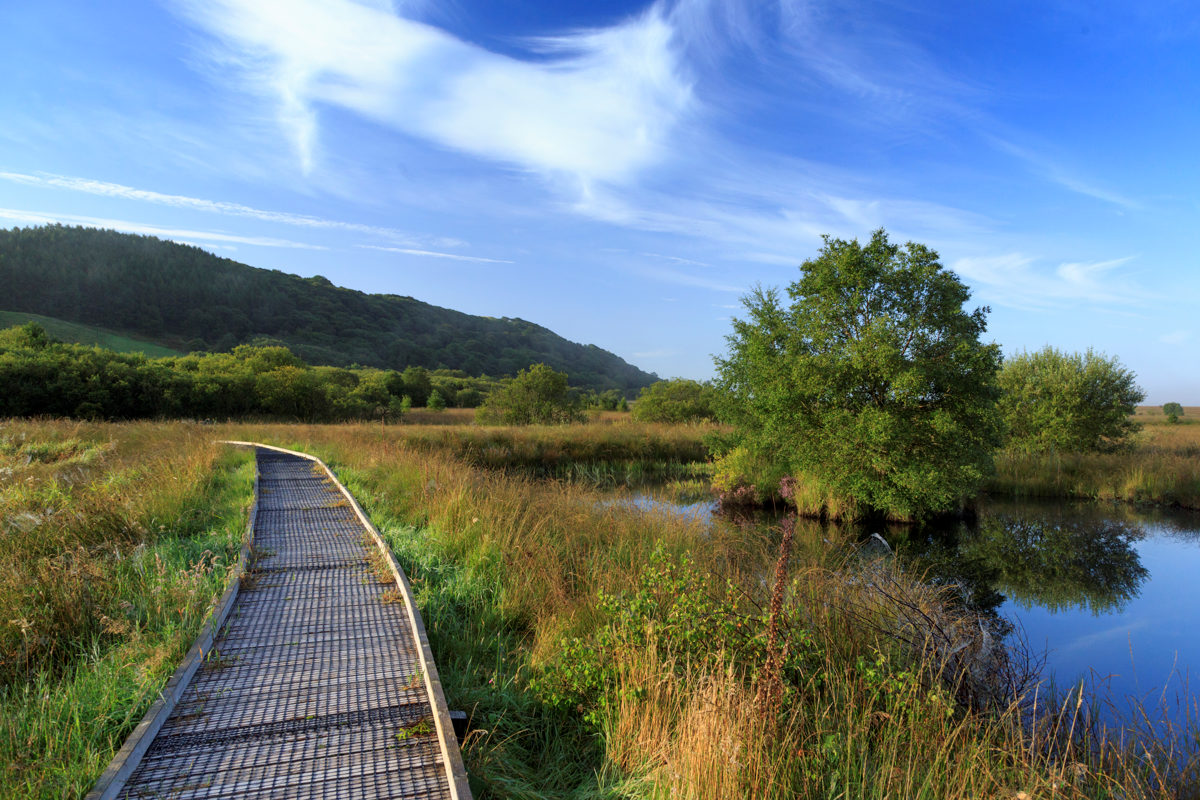
Cors Caron is also known as Cors Goch Glanteifi - the red bog of the Teifi riverside - for the distinctive red hue of its vegetation - sedges, carpets of sphagnum moss, dotted with the delicate, yellow flowered bog asphodel, flag iris and insect consuming sundew. This is the habitat of Ceredigion's 'county flower' too - the pretty heather like, bog rosemary (andromeda polifolia). These and other plant materials form the basis of the deep reserves of peat that have built up over the last 2,000 years, forming gentle dome shaped forms, which are still growing behind a glacial moraine, which the river Teifi has breached.
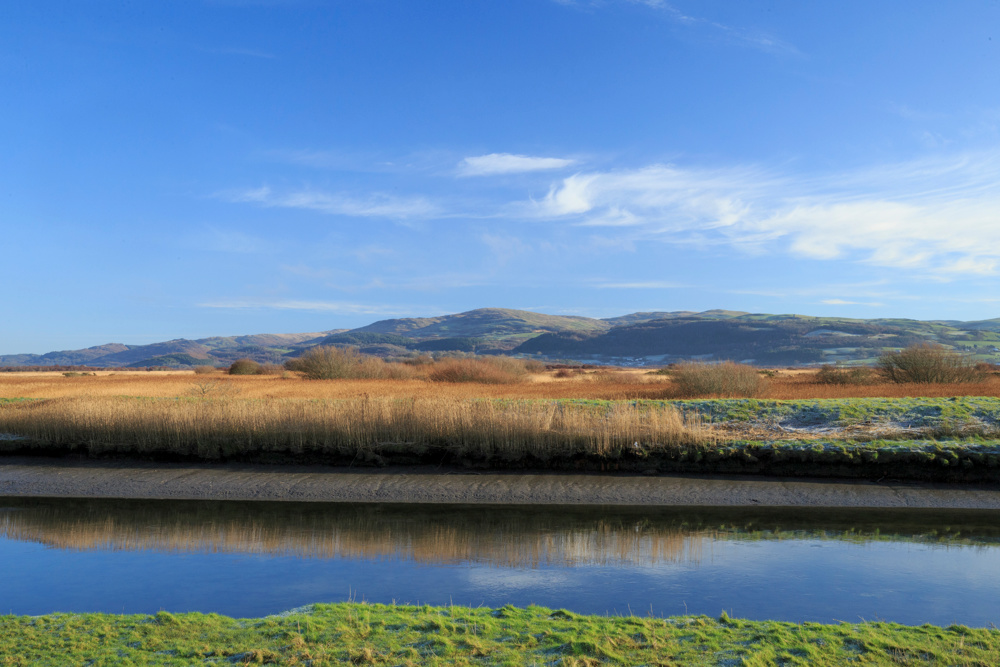
Ceredigion's other internationally recognised peat bog, Cors Fochno, lies along the rive Leri, near the coast between Borth and Ynyslas, at the heart of the Dyfi Biosphere. Cors Fochno is the largest expanse of primary near-natural raised bog in lowland Britain, and forms part of the Dyfi Ynyslas National Nature Reserve. Join one of the regular visits onto the bog with reserve wardens to learn about its plants, mammals and rare amphibians as well as archaeology and modern water management.
Woodland and riverside glades
Bluebells and wild garlic in spring, cool shelter in summer and colourful autumn foliage and fungi in autumn - savour the sounds, smells and colours of the changing seasons on a woodland walk in Ceredigion. Many of Ceredigion's broadleaved woodland are at least 500 years old in origin, with sessile oak, birch, rowan and hazel as well as a variety of mosses, fern and lichens enjoying the pure air and cool shade.
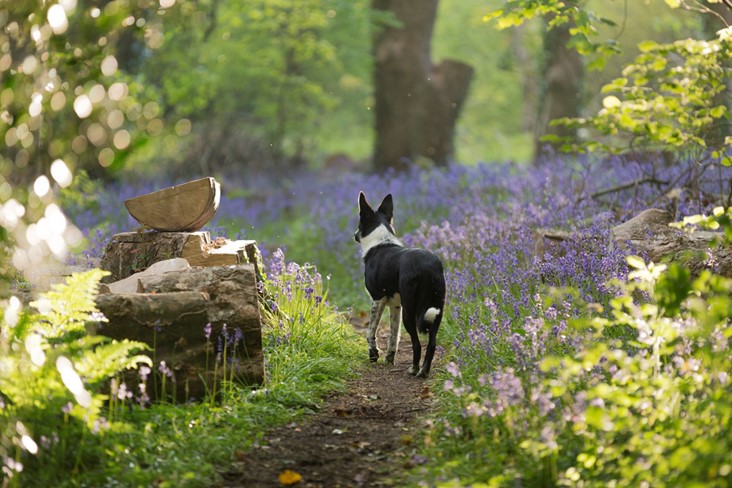
Celtic Rainforest
Coed Einion waterfalls at Eglwysfach and Coed Rheidol woods and gorge in the Rheidol Valley are both Special Areas of Conservation for their special 'celtic rainforest' which are rich in lichens, bryophites, mosses and ferns.
